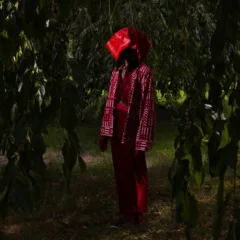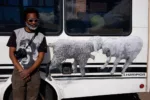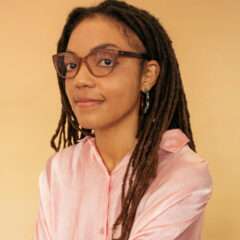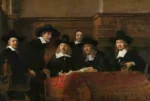A CALL FOR COMPASSION
“Art is the process by which, in imagining itself and the relation of individuals to one another and to it, a society comes to understand itself, and by understanding, discover its possibilities of growth.”
– Robert Penn Warren
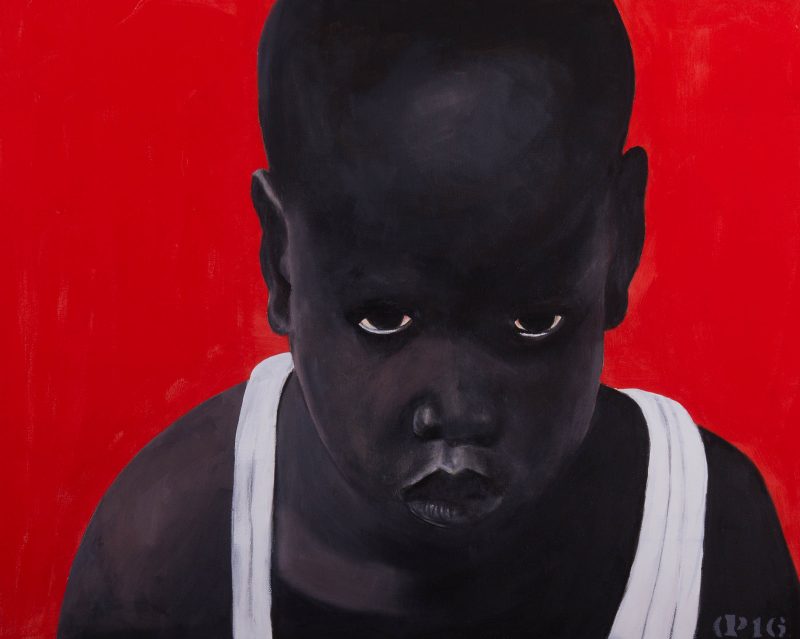
Woodmere’s 76th Annual Exhibition is focused upon the alarming political reality and heightened political uncertainty that we currently face in the United States. Juried by Harry Philbrick, the past director of PAFA’s museum, and now the founding director of Philadelphia Contemporary, the show’s approximately 50 works on display by 37 Philadelphia-area artists** are a vivid and unequivocal testament to human and environmental truths, painful and tragic, which have been denied, distorted, or ignored by those now in power, who cruelly seem not to care.
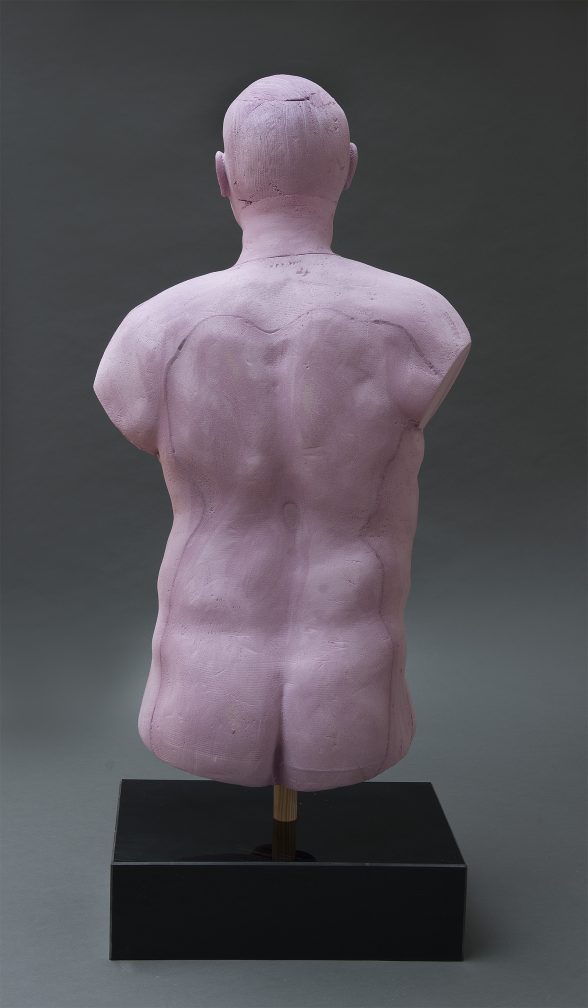
The exhibition begins just outside of the museum’s rotunda on a satiric note as you are greeted by Tim Rusterholz’s sculpture of Vladimir Putin’s plump, nude body, its arms and legs cut off, and its backside facing you. Constructed from carved pink insulation foam, the piece is like a recovered Greek statue that didn’t quite make it into the Louvre. Putin’s piggy coloration and plumpness, like so much of the commentary about our own current president, makes you laugh until you cry.
Things take a far more serious tone after that.
Like this year’s Documenta 14, which features work concerning racism, nationalism, capitalism, and the violence fueled by all three in Europe, the themes that confront you in the Woodmere show include all of the above plus sexism, eco-disaster, gender discrimination, gun violence, and the decline of small town America.
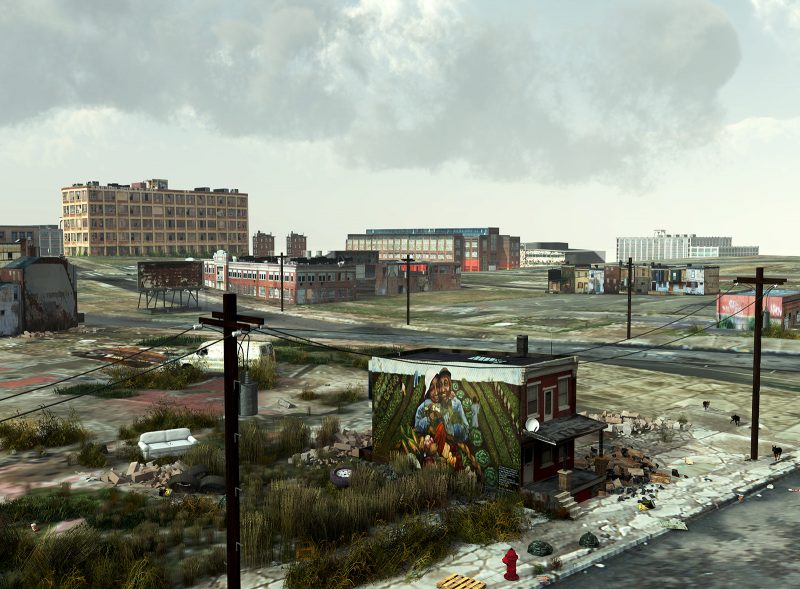
A call for environmental justice
A good number of pieces in the exhibition portray our endangered natural and built environments in disturbing images.
Flora Ward wrote about Tim Portlock’s work when it appeared at Locks Gallery in 2016. Using 3D gaming technology, photography, animation and various digital slights of hand to simulate urban landscapes, Portlock brilliantly dramatizes the displacement of industries and people from many of our urban environments, the result of forces that owe their existence to histories of political, economic and racial injustice. His “Farm,” pictured here, is a fine example of Portlock’s stirring dystopian vision of an urban area stripped of its humanity.
The plight of refugees
It’s impossible when faced with the immigration crisis and the terrible plight of refugees in the world today to overlook the fate of children, of the innocent. Children caught in the struggles of their families simply to survive, to escape war and poverty, to enjoy the security that most of us take for granted. The pathos of Oscar Page’s oil on canvas “Refugee,” pictured above, speaks for itself.
Page’s plaintive portrait, together with a number of other pieces in the exhibition, serve as sad reminders of the suffering being imposed upon immigrant and refugee children and families when quotas and walls and deportation policies replace compassion.
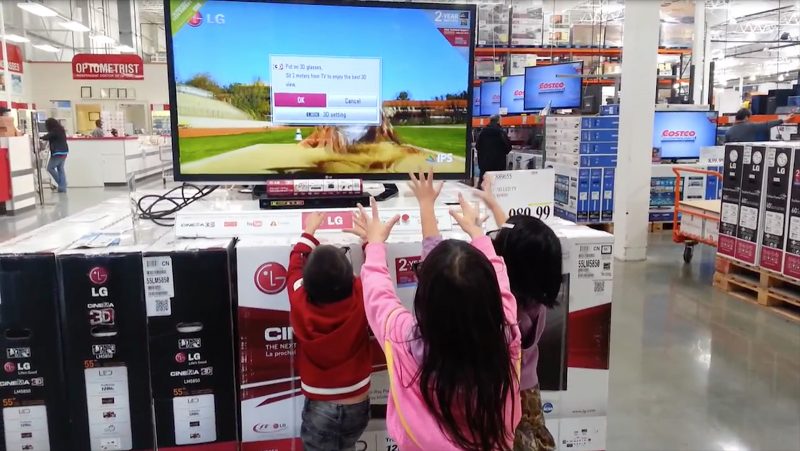
A call for empathic engagement with the world
Six videos feature in the exhibition: I’ll point out one — Sascha Hughes-Caley’s short, chilling piece, “5,646.86 mi (9,087.73 km).” In the video, three children stand in front of a large 3-D television in a Costco. The kids are wearing 3-D glasses, and they’re trying to catch a flurry of balls that appear to be coming at them from the display. But in the audio feed, in place of the sounds of a busy Costco and delighted children, you hear the sounds of a street filled with people and traffic, and a small child singing in Arabic, in Aleppo, Syria, 5,646.86 miles away. The soundscape then abruptly changes to that of a bomb detonating, a suicide bomber’s work, and the ensuing chaos in the street, including the panicked voices of children.
In her note accompanying this piece, Hughes-Caley wonders how we can lead our children towards “empathetic engagement with the world.” I’d expand her question to wonder how we can lead our country towards “empathetic engagement with the world.” How can those of us who live in safety and security, escaping in our own ways, and not unlike the American children in the Costco in Hughes-Caley’s video, awaken ourselves to the suffering experienced by many around the world?
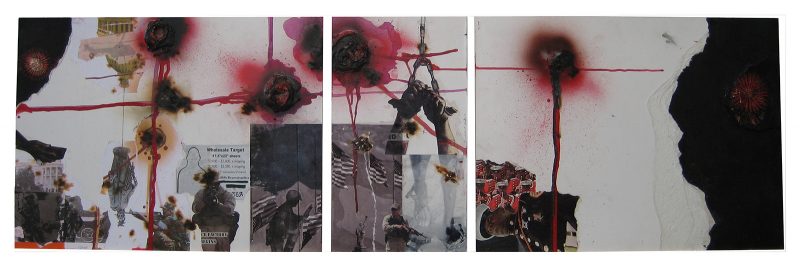
War
“Purple Hearts Bleed,” a collage by Theodore A. Harris, is one of a number of striking pieces in the exhibition that remind us of the impacts of war and militarism upon our culture. Jennifer Zarro interviewed Harris for the Artblog in March, 2016.
The Purple Heart Medal is awarded to American soldiers wounded in combat. Harris’s piece is an homage to those to whom the medal is not awarded, such as the innocent victims of war and violence, and veterans with invisible wounds.
It is always difficult to write about a group show, particularly one like this with an abundance of robust and beautiful work. For every piece that I have spotlighted, and which moved me, know that there are handfuls of others in the exhibition of equal strength which deserve attention. Reflecting what is occurring in today’s art world, the exhibition includes works of multiple modalities – painting, collage, drawing, printmaking, sculpture, video, and performance.
In the current political environment in our country, in which support for the arts (and sciences) appears to be waning, exhibitions like this Woodmere Annual, which feature the work of a collection of talented and insuppressible artists, and are focused upon some of the most important social and political issues confronting us, become all the more important.
The exhibition will be on view through September 4th.
**The artists whose work appear in the exhibition are:
LINDA LEE ALTER, EMILY BELSHAW, MARIEL CAPANNA, JACINTHA CLARK, FRANCESCA COSTANZO, EMILY ERB, TERRENCE GORE, SUSAN HAGEN, CHARLES HALL, THEODORE A. HARRIS, NISHAT HOSSAIN, SASCHA HUGHES-CALEY, JANE IRISH, LIZ JOHNSON AND WARREN BASS, MELISSA JOSEPH, MELISSA MADDONNI HAIMS, TILDA MANN, MARIE MANSKI, ANNE MINICH, OSCAR PAGE, TIM PORTLOCK, MATTHEW PRING, JACK RAMSDALE, ANA VIZCARRA RANKIN, MIA ROSENTHAL, TIM RUSTERHOLZ, ROSALIND SUTKOWSKI, JACQUES-JEAN TIZIOU, MAT TOMEZSKO, KUKULI VELARDE, HILARY WANG, VIRGINIA LEIGH WERRELL, ASHLEY WICK, RACHEL WINSLOW, MEG WOLENSKY, and RACHEL ZIMMERMAN


